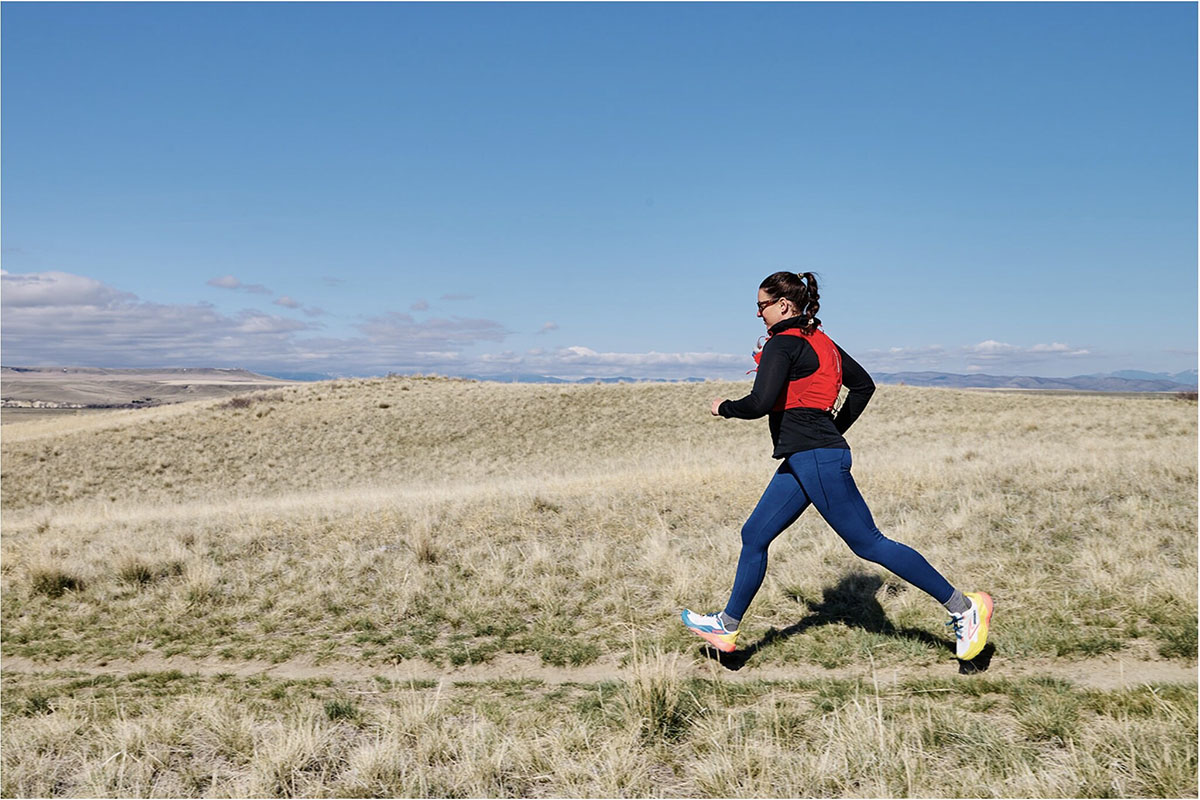
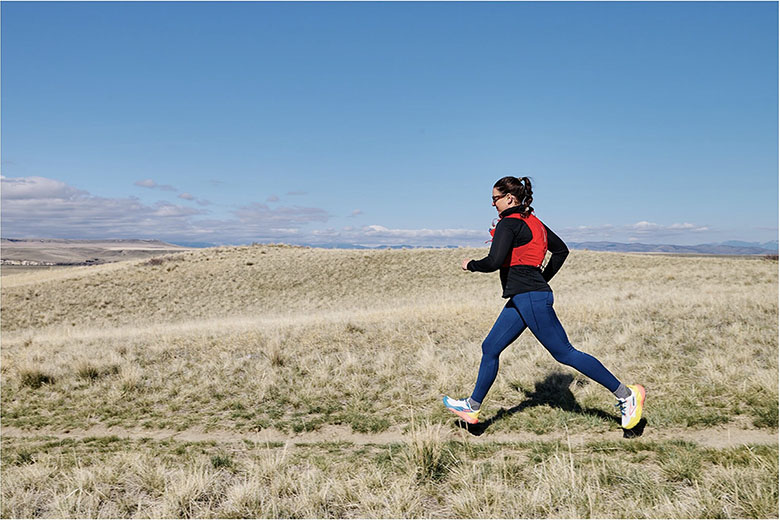
Price: $150
Weight: 1 lb. 2.6 oz. (women's)
Cushioning: Maximum
Drop: 6mm
What we like: A supremely comfortable, highly cushioned shoe with excellent all-around traction.
What we don’t: Protection around the forefoot and substantial toe bumper can make it tough to get a locked-in feel.
See the Women's Brooks Caldera 8 See the Men's Brooks Caldera 8
Trail running shoes are a stacked category, and the ones that works best for you depend on your running style, terrain, foot shape, and cushion preferences. I run in dozens of shoes for my job as a footwear tester, but the pair I find myself reaching for most often is the grippy, cushioned, ultra-comfortable Brooks Caldera. I've put these shoes to the test on off-trail desert terrain, long days in the northern Rockies, and most recently on a three-week hiking trip in the forests and volcanic slopes of southern Japan. For runners looking for a blend of out-of-the-box comfort, excellent traction, and lofty cushion (and don't mind some funky colorways), the Caldera is my top recommendation of the season. Below I break down my experiences with the Brooks Caldera 8. To see how it stacks up to the competition, check out our article on the best trail running shoes.
As a certified klutz, I can't afford to be slipping and sliding more than I already do, and the TrailTack outsole and deep lugs on the Brooks Caldera 8 feel incredibly secure on a variety of surfaces. The 4.5-millimeter, multi-directional lugs cut into mud and loose dirt, and the classic chevron shape aids in traction on steep ascents and descents. The rubber gave me no issues on nerve-wracking downclimbs on smooth rocks during off-trail route-finding, and they held their own in loose shale, as well. I've worn these in some serious mud and been impressed with how well they shed buildup, and the rubber hasn't dulled or degraded in any noticeable way. Since the lugs are so aggressive, they aren't the most efficient shoes on moderate trails—look to the mellower outsole of Brooks' Cascadia for that—but for trails where you want secure grip on a variety of surfaces, these have yet to disappoint.
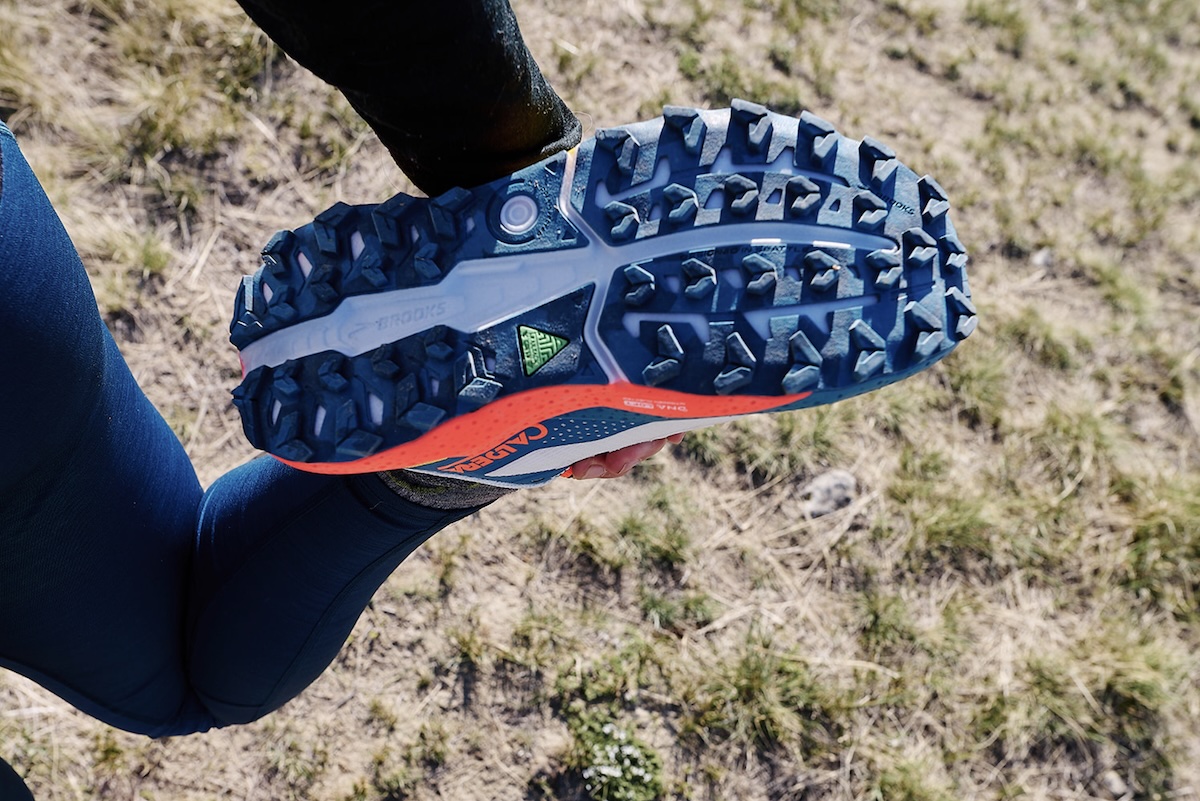
Despite the 38.5-millimeter heel stack, I've found the Caldera 8 to be stable on a variety of surfaces and off-camber trails. The foot plant feels solid, and the base is wide enough for stable landing during both trail runs and hiking with a heavy pack. The upper wrap improved from the 7 to the 8, with an offset eyelet system that lets me customize the lace placement for a foot-hugging fit. I've had issues this year with trail shoes feeling loose and unstable through the collar (in particular Altra's Mont Blanc Speed and the Arc'teryx Norvan LD 4), and I was relieved to switch back to the Calderas during a recent shoe-testing outing.
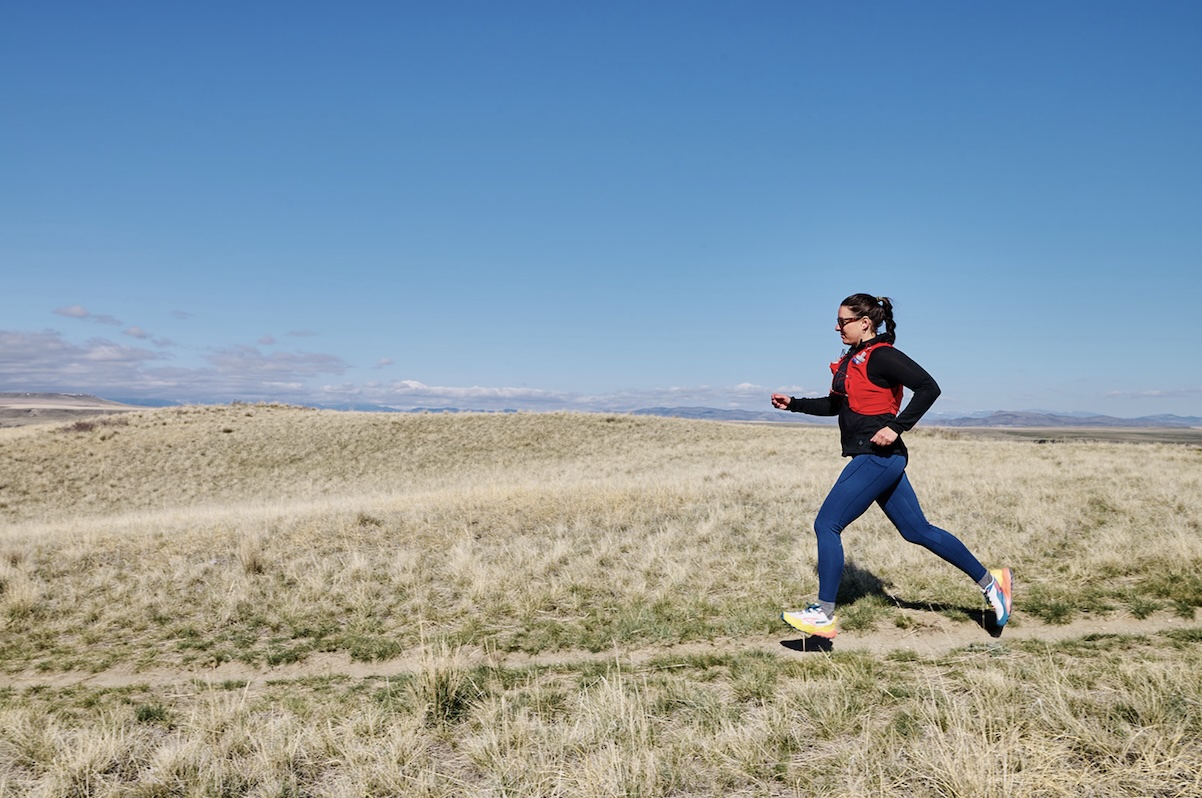
The Caldera is not a true stability shoe, though, and lacks the torsional control from denser foam placement of high-support shoes. Additionally, while the Brooks has a wider base than some of my taller Hoka shoes, it's on the high end of cushioning and can take some getting used to for runners accustomed to a more standard 24- to 28-millimeter heel stack (like what you get with the Saucony Peregrine). Brooks counters some of this inherent tall-stack instability with a "bathtub"-style midsole that helps cradle your foot to reduce lateral rolls, and the 6-millimeter drop is subtle without losing rolling momentum. And I should note: While these shoes fit my feet well, other testers reported difficulty staying locked into the forefoot thanks to bulkier overlays covering the toe box and forefoot.
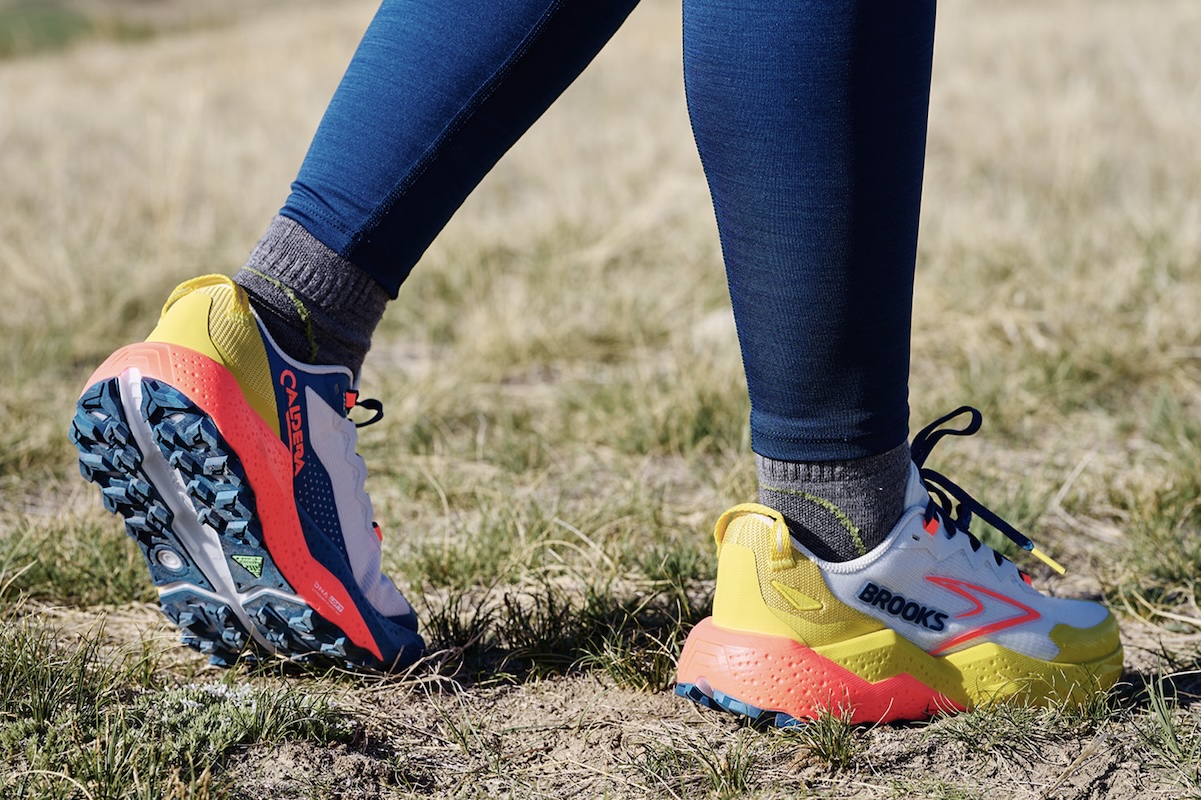
I've become a fan of max-cushioned shoes over the past few years, which is largely what inspired my switch from the Cascadia to the Caldera. The Caldera's midsole is an airy, responsive DNA Loft v3 with a whopping 38.5 millimeters of cushion under the heel and 32.5 under the forefoot. This is tall for the trail running world, even coming in a hair over the 38-millimeter heel stack of Hoka's Speedgoat 6. I've found Brooks' foam to be more responsive than Hoka's—similar to the feel of the Saucony Triumph, my favorite road runners. The midsole is soft enough to provide protection and cushion despite the lack of rock plate but responsive enough that I don't feel like I'm losing energy return on faster sections.
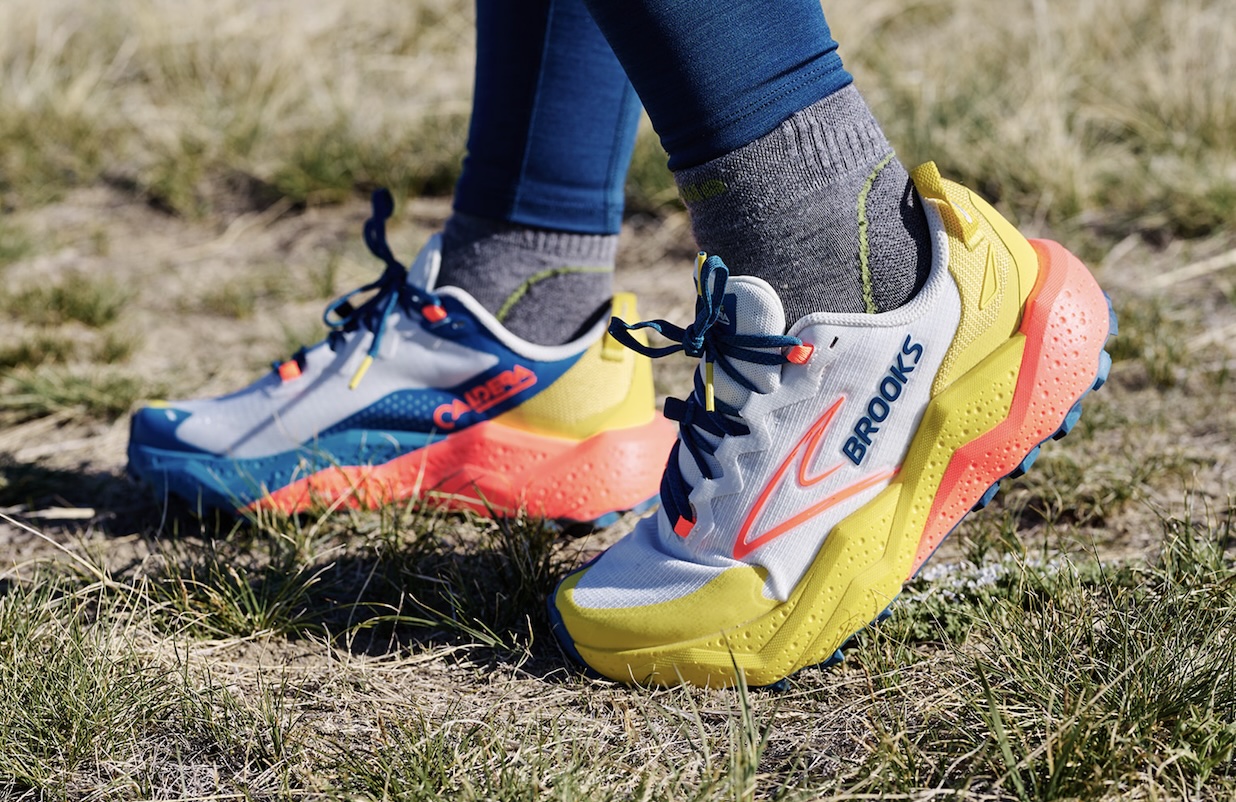
The combination of cushion and comfort is a hallmark of the Caldera, with Brooks specifically marketing these as a good shoe for endurance races. These shoes are fairly easy to wear for a range of foot shapes, with a moderate fit through the midfoot and a flared toe box that that's neither sloppy nor too tight. The women's version has a lower-volume heel cup that feels secure without constricting, and the tongue and collar are nicely padded with secure lacing that prevents ankle-banging while sidehilling or navigating off-camber terrain. Finally, Brooks updated their lacing system with offset eyelets that help them feel even more secure, and I almost never have to retie them during an outing. In short, they have a technical fit without sacrificing room in the toe box, and it all comes together for a versatile, comfortable trail shoe.
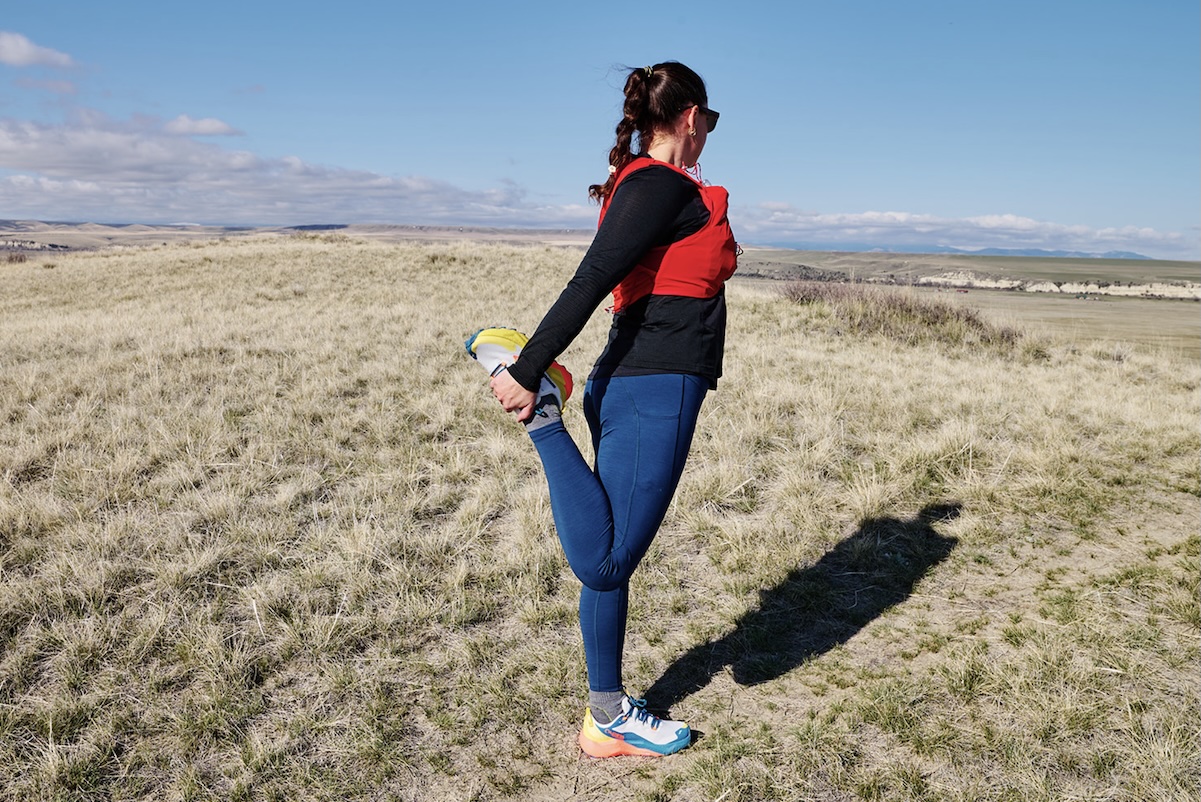
At 1 pound 2.6 ounces per pair for the women's version, the Caldera 8 is fairly average for a max-cushioned trail shoe, though they come in a tad heavier than other favorites due to the upper reinforcements. For reference, the women's Hoka Speedgoat 6 checks in a little lighter at 1 pound 0.4 ounces, while the similarly cushioned On Cloudultra 2 clocks in at 1 pound 2.7 ounces. I've never felt like the Caldera is a laggy or heavy shoe, but it's certainly not the most ultralight or nimblest trail runner out there, designed more for comfort over long distances as opposed to trail sprints and technical mountain climbs.

Brooks revamped the Caldera 8's upper this year, and the air mesh is more flexible than previous iterations, which felt somewhat stiff. This year's model also added thermoplastic polyester elastomer (TPEE) to the outer mesh, which should increase durability and help with water resistance. I've never had an issue with the Caldera's durability, but I certainly wouldn't mind getting a little more life out of any pair of shoes. I've noticed that moderate amounts of water clear quickly from the upper, and while the shoes aren't waterproof, I've saturated them on early-spring runs, and they dried quickly in the sun. I put a lot of miles on the 7 last season and noticed almost no dulling or peeling on the outsole, and the 8 is holding up equally well so far.
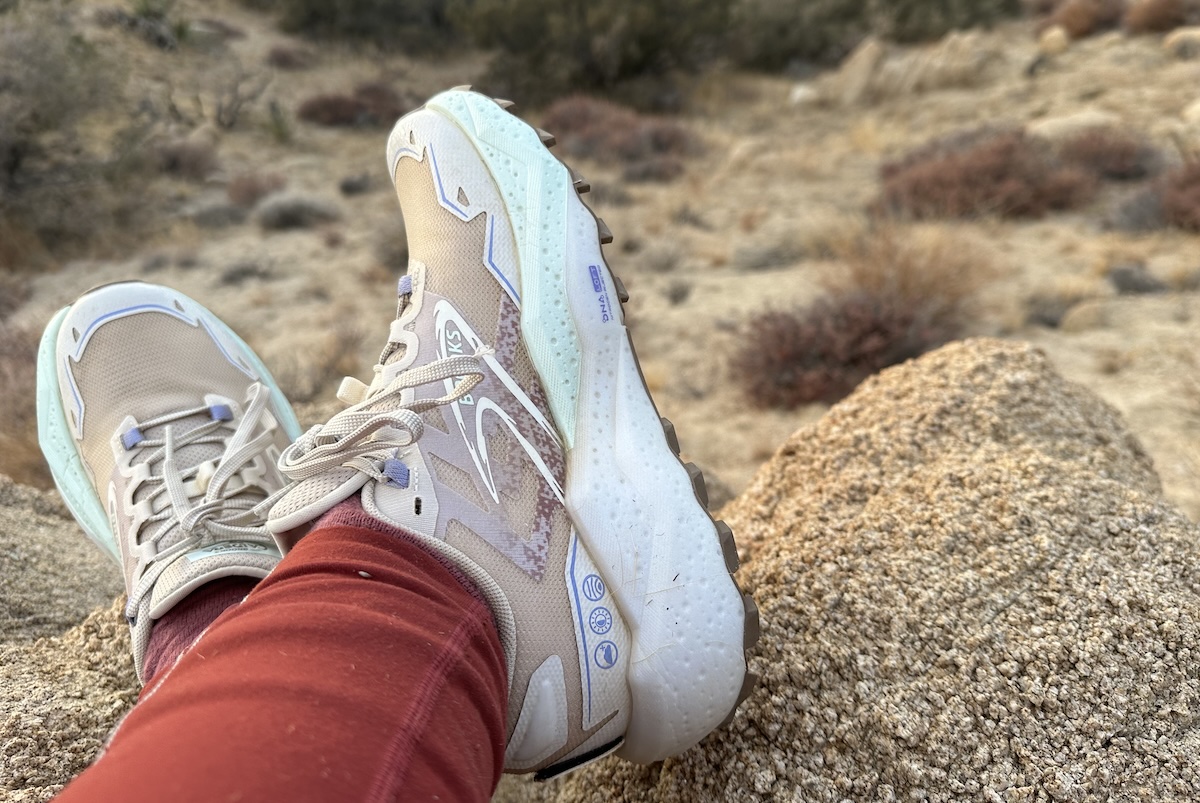
The Brooks Caldera 8 fit my foot extremely well out of the box in my usual women's size 8. I have a fairly standard foot, and Brooks shoes tend to fit me well, but those with lower-volume feet might find a little extra room in the toe box. The updated lacing system made it easy to dial in the tension and secure the collar, and I've never noticed any pressure on my achilles from the low-rise heel counter. These pair well with ankle socks, and the fit is dialed enough that it's hard for debris to sneak in.
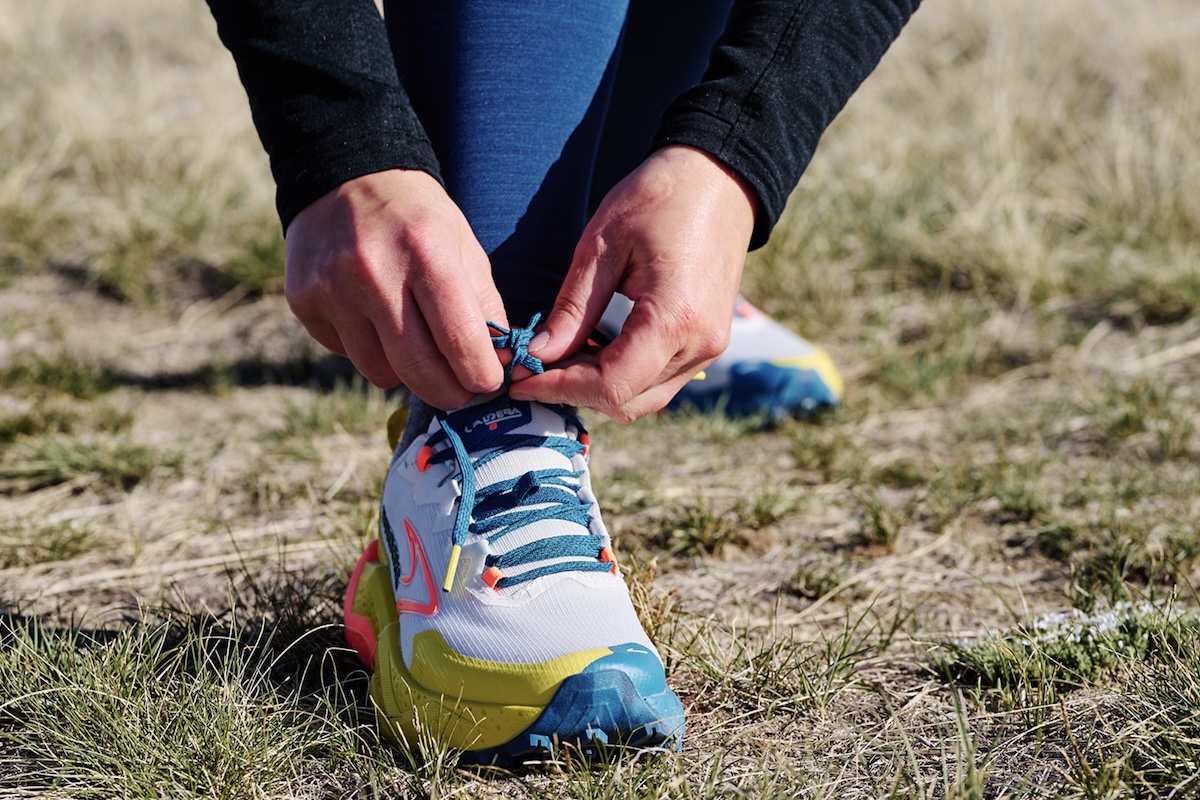
My review above covers the women’s Brooks Caldera 8, and it’s also sold in a men’s version for the same price. In comparing the two, the men’s Caldera 8 is a little heavier at 1 pound 5.2 ounces for the pair but features the same 6-millimeter drop and a nearly identical design apart from colorway options. Brooks doesn't offer waterproof versions of the Caldera, but if you like the fit of Brooks' trail runners, they offer the Cascadia 18 and Divide 5 in both men's and women's Gore-Tex models.
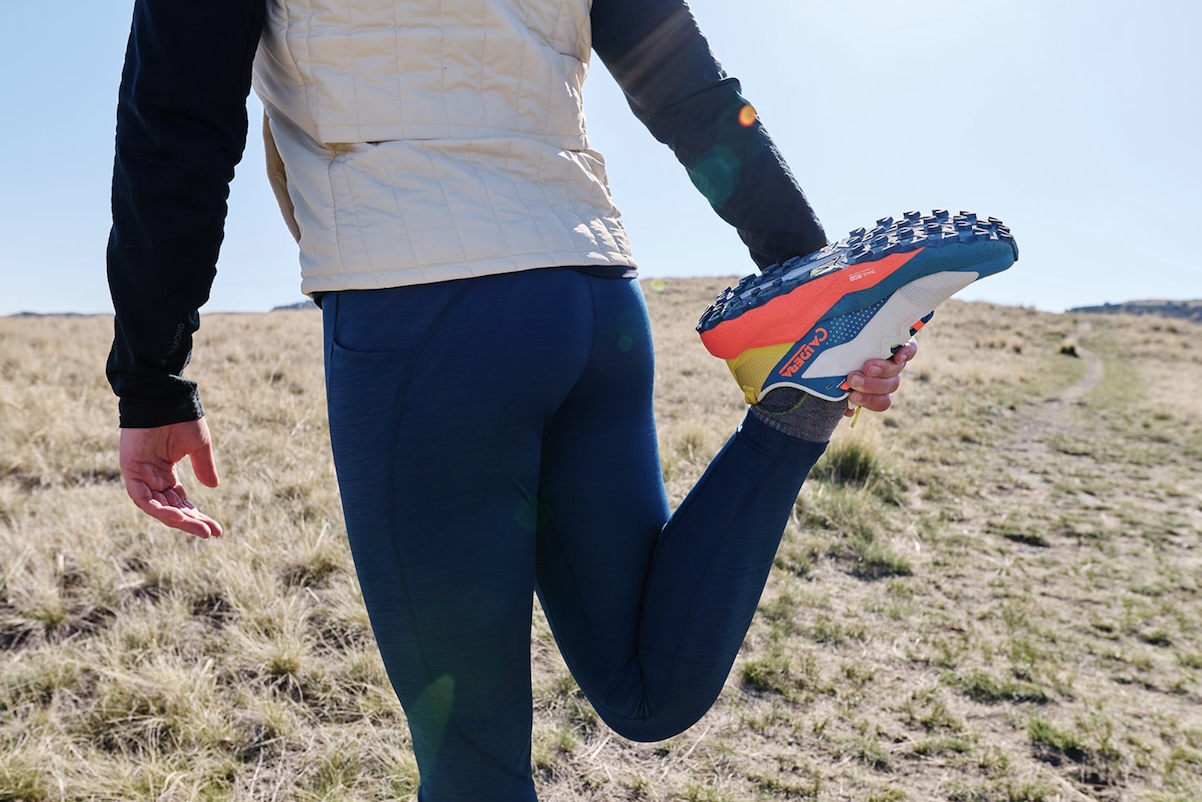
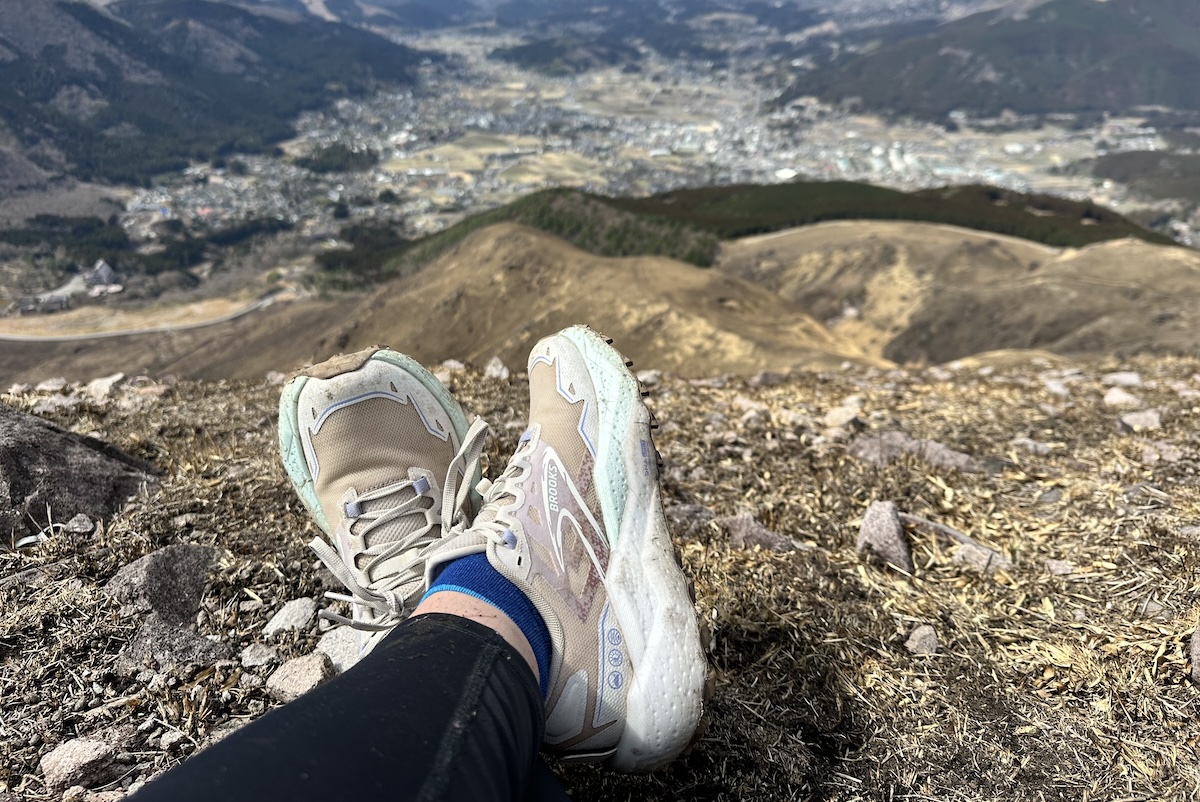
| Shoe | Price | Weight | Stack Height | Drop | Cushion |
|---|---|---|---|---|---|
| Brooks Caldera 8 | $150 | 1 lb. 2.6 oz. | 38.5mm heel / 32.5 forefoot | 6mm | Maximum |
| Brooks Catamount 4 | $170 | 1 lb. 1.0 oz. | 34mm heel / 28 forefoot | 6mm | Maximum |
| Hoka Speedgoat 6 | $155 | 1 lb. 0.4 oz. | 38mm heel / 33 forefoot | 5mm | Maximum |
| Saucony Xodus Ultra 3 | $160 | 1 lb. 1.4 oz. | 36mm heel / 30 forefoot | 6mm | Maximum |
The Brooks Caldera 8 has been my top pick for a solid, max-cushioned trail shoe for the past several seasons, but it's a hair heavier than similarly intentioned trail runners. For those who like Brooks' fit and out-of-the-box comfort but want a nimbler, lighter shoe, the Catamount 4 is a good bet. I've found these to be more responsive and agile, and they still have solid cushioning with 34 millimeters under the heel compared to 38.5 for the Caldera. The Catamount weighs 1.5 ounces less per pair than the Caldera and also includes a rock plate for added underfoot protection and structure.
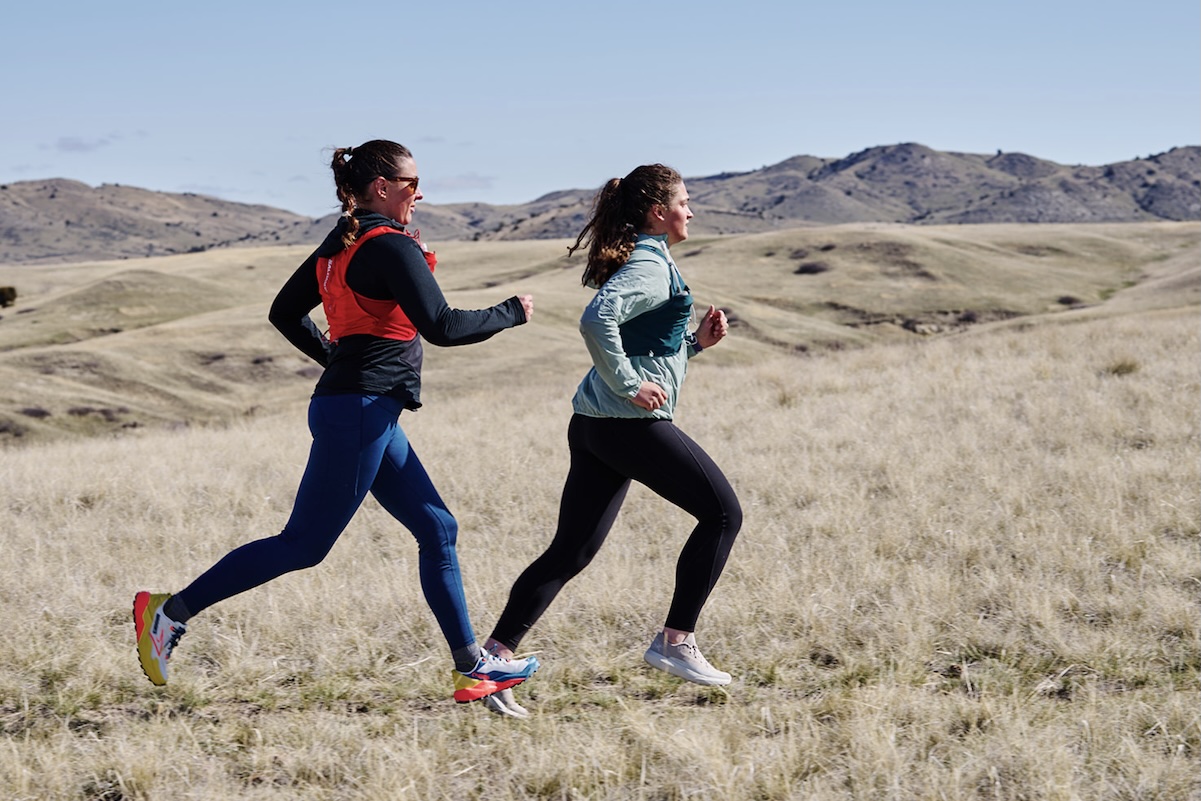
I'd be remiss not to include a comparison to the original max-cushioned trail runner: Hoka's legendary Speedgoat. The latest Speedgoat 6 has deep-cutting lugs for unrivaled traction and is around 2 ounces lighter per pair than the Caldera. I've found the Speedgoat to be a bit narrow through the upper and less stable underfoot, but runners with lower-volume feet will appreciate the locked-in feel. Finally, Saucony's Xodus Ultra 3 is another highly cushioned trail shoe with a similarly reinforced upper and 6-millimeter heel-to-toe drop. The Xodus doesn't have quite the same outsole bite as the Caldera, but the midsole foam can feel more responsive, and it has the benefit of a rock plate paired with a 1.2-ounce drop in weight.
Back to the Brooks Caldera 8 Review See Our Trail Running Shoe Guide